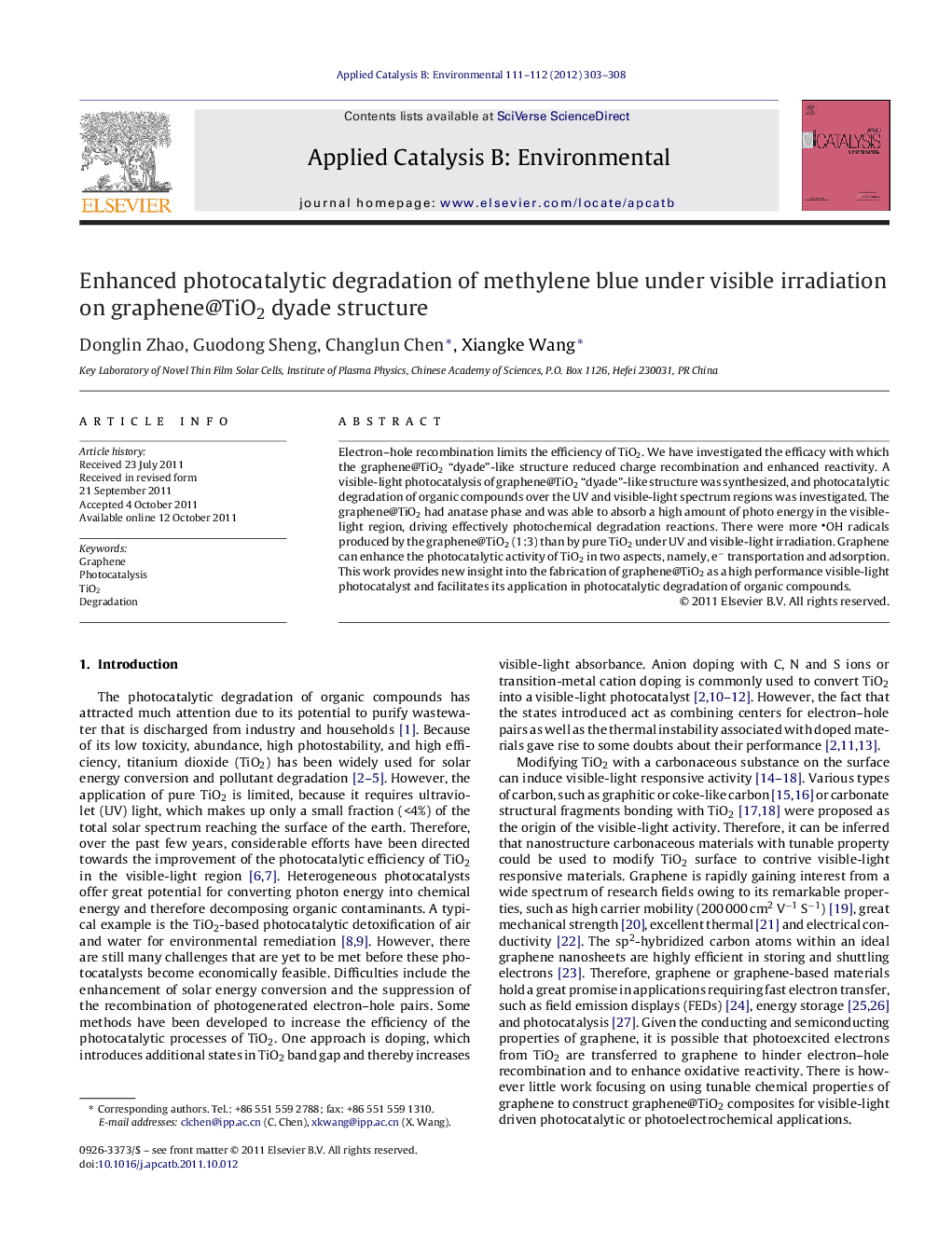| Article ID | Journal | Published Year | Pages | File Type |
|---|---|---|---|---|
| 46476 | Applied Catalysis B: Environmental | 2012 | 6 Pages |
Electron–hole recombination limits the efficiency of TiO2. We have investigated the efficacy with which the graphene@TiO2 “dyade”-like structure reduced charge recombination and enhanced reactivity. A visible-light photocatalysis of graphene@TiO2 “dyade”-like structure was synthesized, and photocatalytic degradation of organic compounds over the UV and visible-light spectrum regions was investigated. The graphene@TiO2 had anatase phase and was able to absorb a high amount of photo energy in the visible-light region, driving effectively photochemical degradation reactions. There were more OH radicals produced by the graphene@TiO2 (1:3) than by pure TiO2 under UV and visible-light irradiation. Graphene can enhance the photocatalytic activity of TiO2 in two aspects, namely, e− transportation and adsorption. This work provides new insight into the fabrication of graphene@TiO2 as a high performance visible-light photocatalyst and facilitates its application in photocatalytic degradation of organic compounds.
Graphical abstractFigure optionsDownload full-size imageDownload as PowerPoint slideHighlights►A visible-light photocatalysis of graphene@TiO2 was synthesized. ►The graphene@TiO2 absorbed a high amount of photo energy in the visible-light region. ►There were more OH radicals produced by the graphene@TiO2 (1:3) than by pure TiO2 under UV and visible-light irradiation. ► Graphene can enhance the photocatalytic activity of TiO2.
